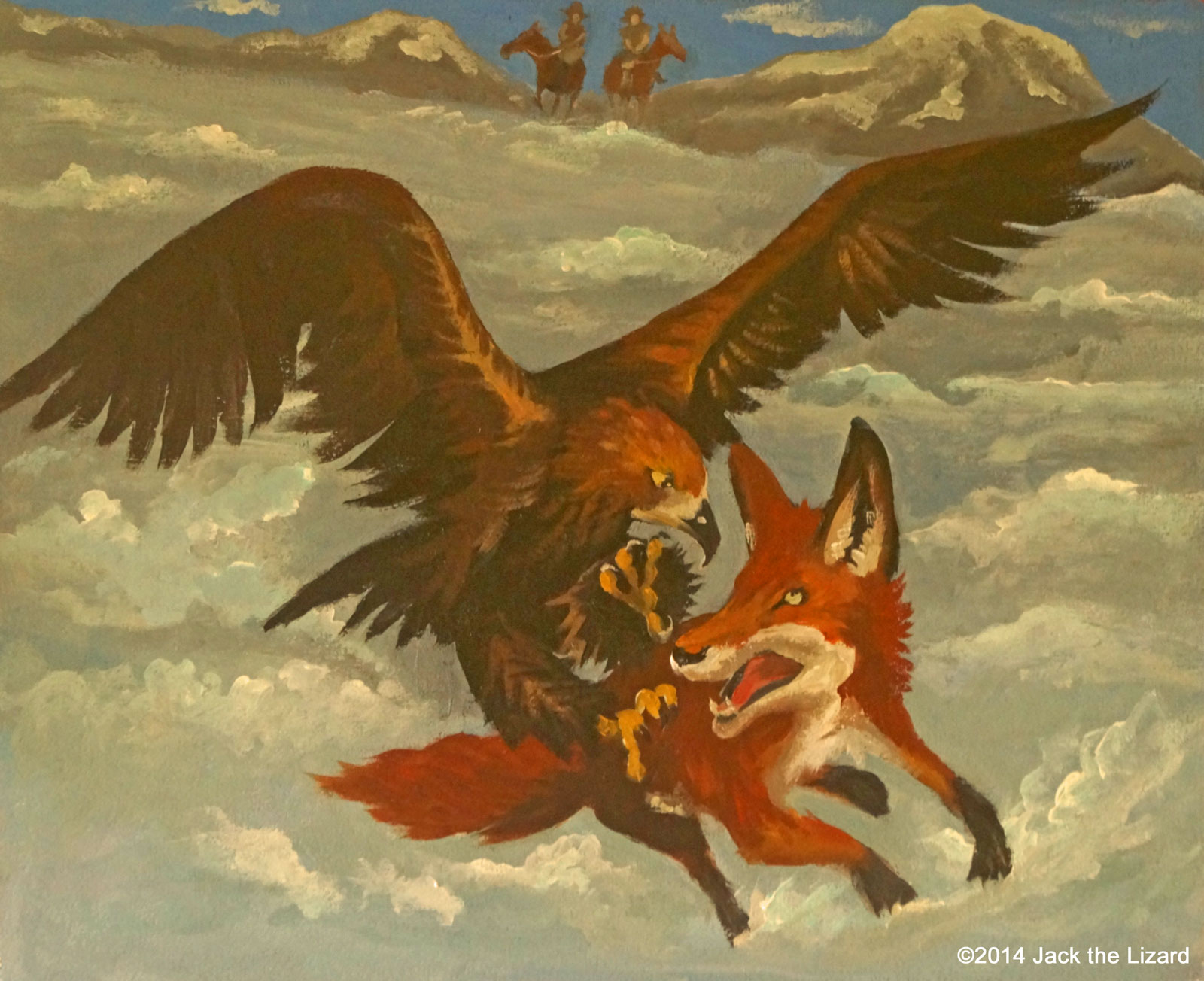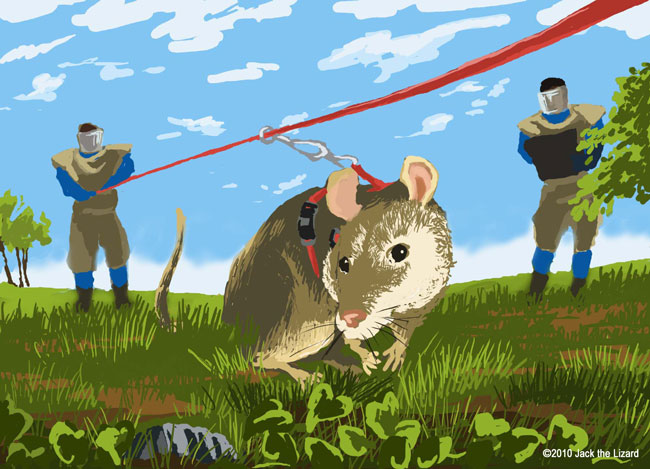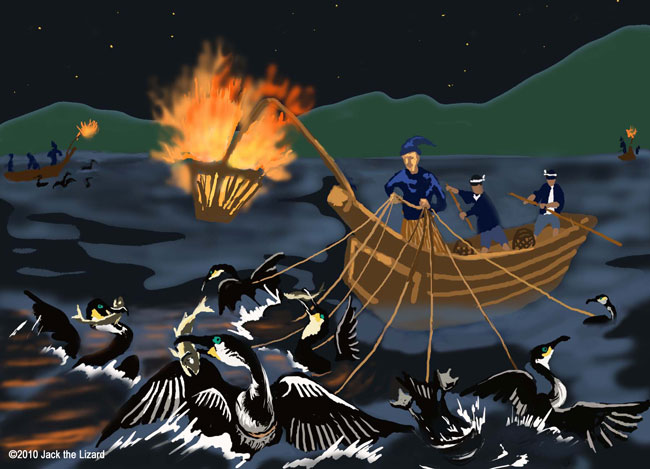
|
|
|
|
|
Jack the Lizard is on YouTube |

|
Golden Eagles in Kazakhstan |
|
Golden eagle hunting has been practiced since Bronze Age for several thousand years ago. Kazakhstan in which golden eagles are trained for hunting is in central Asia. Not only golden eagles are working with people but also hawks and falcons are with people for birds such as geese and quail. Eagle hunting starts from November and continues to at the end of the February. The hunting season is set in winter because animal fur is in best condition during this time of a year. Well trained and strong eagle can kill a deer or even wolf. However, only the expert who has enough knowledge and experience can deliver the successful eagle hunting. Eagles are captured in the wild and trained gradually as hunting birds who can only eat raw meat from the hands of their owner. Eagles also get used to horses and dogs as these animals are necessary for hunting as well. Since Golden eagles are protected species, hunters also participate in the conservation program of this bird. |

|
Tiny Hero in mission - African Giant Pouched Rats - |

|

|
African Giant Pouched Rats live in central Africa and from Angola to north-east of South Africa. They are large rodents about 25 to 45 cm (9 to 18 in). As omnivorous animal they eat vegetables and insects. Particularly they like palm fruits and seeds. Active at the night, but they are also finding food during the day. APOPO is the non-profit organization (headquarter in Tanzania) at which African Giant Pouched Rats are trained to detect landmines. Since they have very acute sense of scent to find foods or avoid danger, they can identify the odor comes from volatile mixture inside mines. They are also working to find tuberculosis. African Giant Pouched Rats are chosen, not dogs, because they are easy to train and easy to maintain humanely. Most of all they are too light and tiny to set off a landmine. |

|
Dive! Cormorant |
|
Traditional cormorant fishing is still taking place in Japan. There are 13 locations for this fishing is known in Western Japan and one of the most famous one is on the Nagara River. The cormorant fishing on the Nagara River has long history about 1300 years old. For fishing cormorants are trained by the fisherman for 2 to 3 years. During this training time the fisherman and cormorants spend together almost all day long to build trust between them. The fishing season starts from middle of May and ends it up in middle of October. During the night three fishermen go to the river with cormorants. Since fish tends to gather around light and there are no other light sources but fire in the night, it is taking place when it is dark. The fisherman ties throat of each cormorants with rope. In this way cormorants cannot swallow large fish but they can eat smaller one. The fisherman controls as many as 12 cormorants at the same time. Because of that long history the fishermen on the Nagara River are actually agents of the Imperial Household Agency. Every year they send Ayu, sweetfish to Tokyo Imperial Palace. In the meantime the cormorant fishing is also taking place in China, Europe and Peru. |

|
Is llama your guard? Yes, he is very reliable. |

|

|
You may see llamas in pasture in North America . They are not livestock but the guards. After spending several days with the herds of sheep, goat, alpaca, and other animals, the llama gets bonded with them and starts working to protect them from any predators. Llamas are instinctively aggressive toward coyotes, wolves, and dogs. When llamas notice the predators coming closer to the herd of sheep, the guard llamas call alarm for the sheep, herd them, walk or run toward the predators, chase after them, stand between the predators and sheep, paw them, or kick them. It is very interesting that the farmers found their livestock looks more relaxed than being guarded by dogs. |

|
Defence Team from the sky |
|
North America has a lot of high graded vineyard. In the harvest season, late September and October, when the grapes are ripened, the clouds of starlings land on the vineyard. The crops of grapes are pecked away and the damage is estimated several million dollars each year. The farmers set the tools to protect the grapes, but the starlings are so smart that they know how far the pellet spray reaches. They learn quickly how to get into the plastic nettings. They know shotguns are just noise but not bullets. So the falcons are teamed up to protect the vineyard. They are the natural predator of starlings. They fly up to 500 meters height and dive into the flock of starlings. The starlings are scared away and won't come back to the vineyard soon. The airports are good resting area for gulls, pigeons, geese and many other birds. Sometimes the birds fly into the airplane engines and cause huge damages. So the defence team of falcons are on duty. They fly up to the sky to scare all the birds away. At Toronto Pearson International Airport, several falcons fly to patrol at the sunrise, the sunset, and anytime when the control tower requests them to work. |

|
It is mesmerizingly aromatic. |

|

|
Truffle is called “diamond in kitchen”. It glows around the roots of oak, birch, poplar, pine, and so on in Europe, China, Australia, and North America. It costs about US$660 to $2,200 per kilogram (US$300 to $1,000 per pound). The record highest price was $330,000 for 1.15 kg truffle purchased by Hong Kong business man. It is equivalent to $100,000 per pound. Dog and pig are known as the best truffle digger because they have very sensitive scent. The trainers use cheese to train their dogs in Italy. The dogs don’t eat truffles, but look for them just for fun. Although the dogs enjoy treasure hunting with their master, they easily get bored in about an hour, and stop looking for truffles. On the other hand female pigs are preferred by farmers in South France. Pigs are motivated digger because they love to eat truffle. So their bottomless appetite drives them to keep working for long hours. Downside is that the farmers have to pick up the truffle as soon as possible, otherwise the pig devours it. |